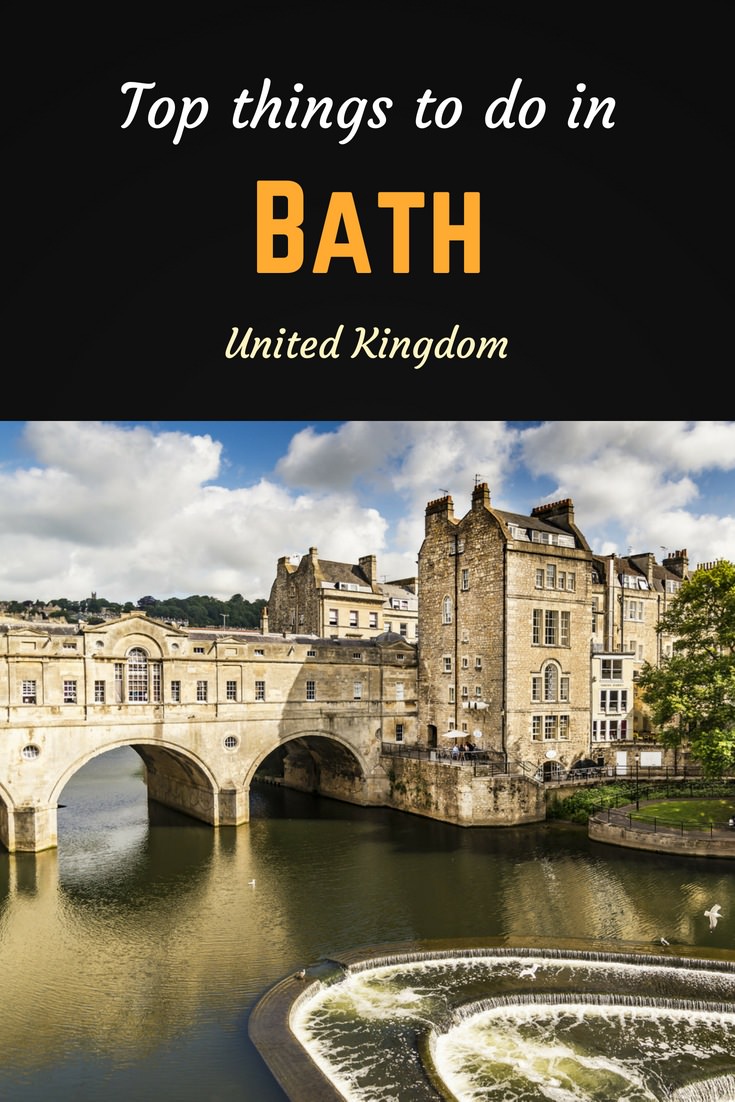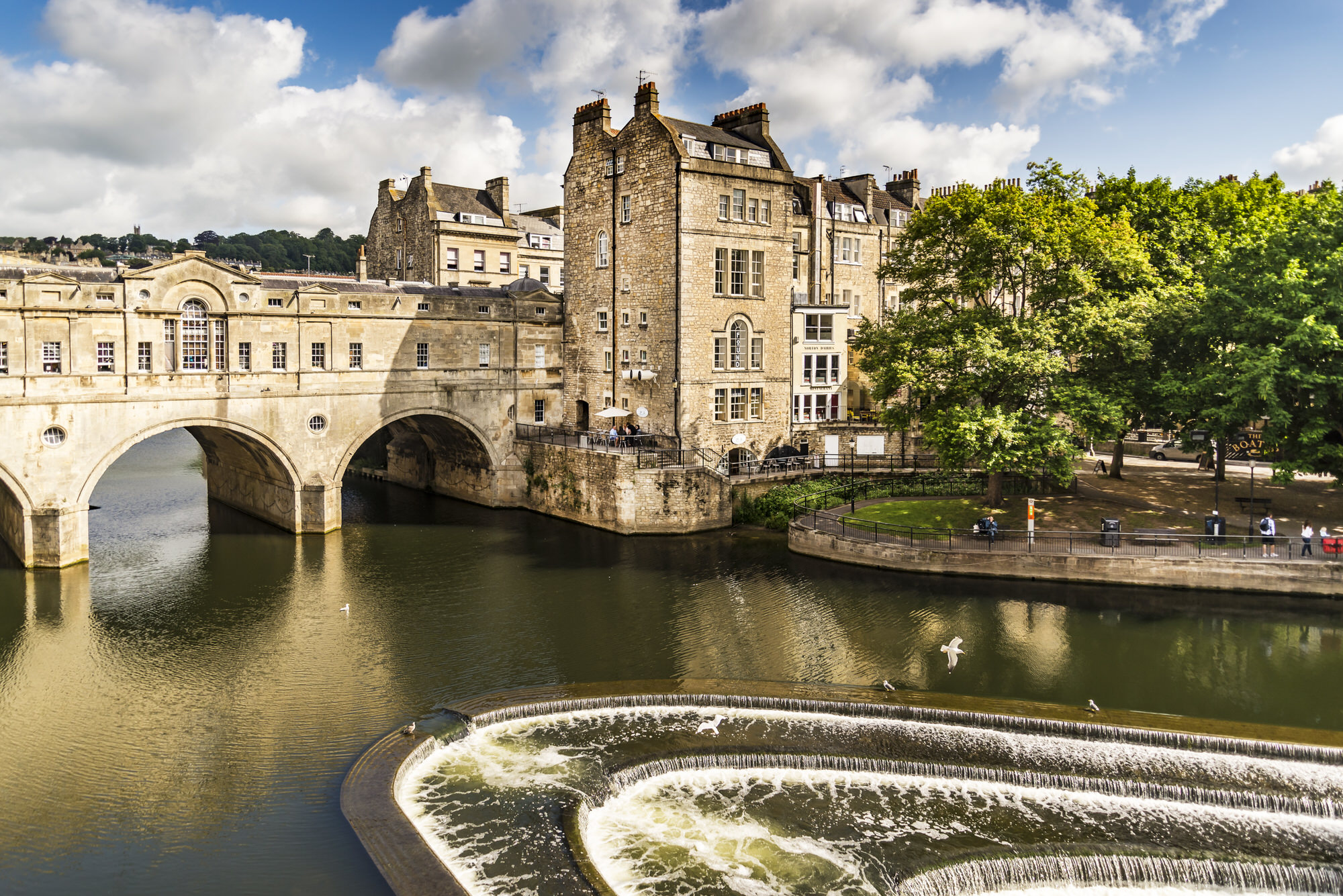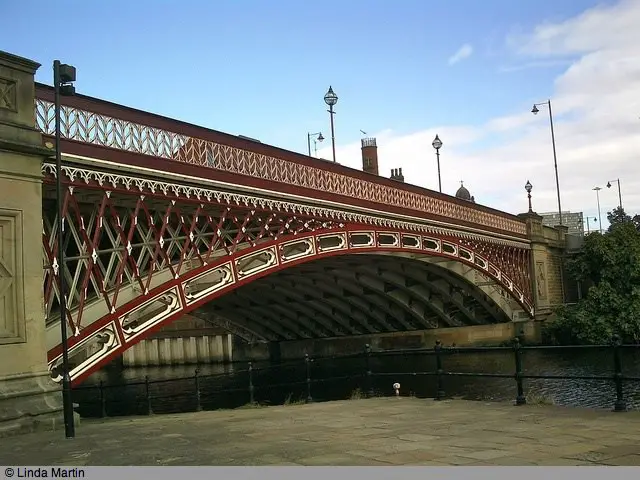What to do in Bath, UK
Bath is one of the most picturesque towns in England, and its famous Roman baths (for which the town is named) draw hundreds of thousands of tourists each year. Bath is definitely worth a visit, and as it is located just 90 minutes by train from London, can be conceivably visited in a daytrip from the capital. We’d recommend an overnight stay, though, and a longer visit would allow you to truly soak up the atmosphere.
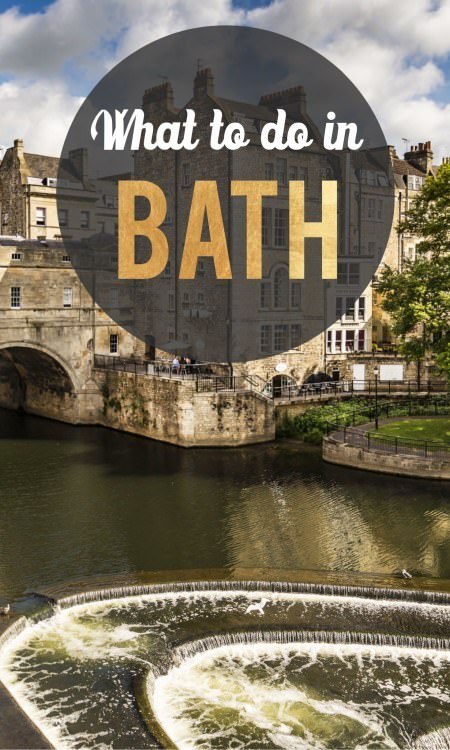
Getting to and from Bath, UK
Direct trains run from London Paddington station and take between 90 minutes and two hours to get to Bath train station, which is conveniently located in the centre of town.
If you book in advance, you can get single tickets from £14.50 – and it’s a lot cheaper to buy two of those than to get a return ticket – they start at £56.50. If you buy a ticket on the day, you’re looking at around £30 each way.
National Express, the coach company, also runs a service to Bath from London (and from many other places throughout the country). The trip’s a lot longer than the equivalent train journey – between three and three-and-a-half hours. National Express often has cheaper fares for as low as £5 per person each way – a good discount off the standard £18.70 fare. Book in advance to get the cheapest fare.
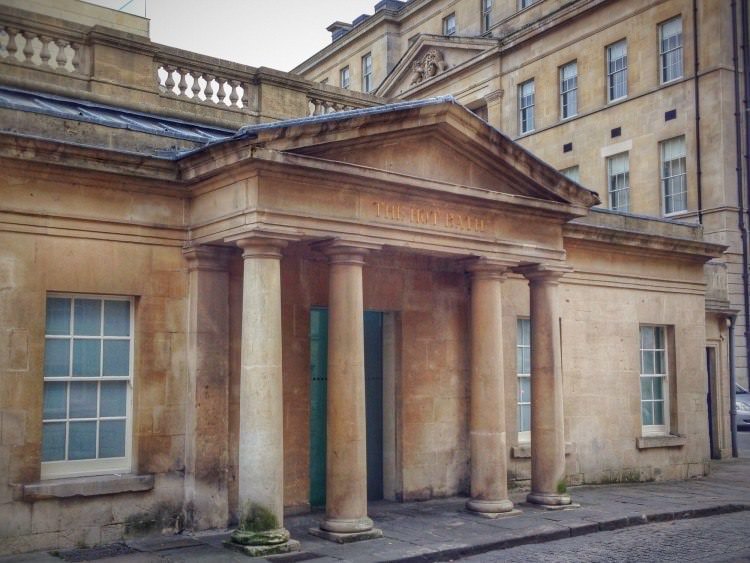
The closest airport to Bath is Bristol airport, still a good hour away from Bath by coach and train, but worth considering over London if you’re flying in from continental Europe.
And, of course, you can hire a car and drive there, giving you the flexibility to see some of the countryside and other attractions of the South West. But for Bath itself, a car isn’t necessary – the town is very compact and you can see all the principal attractions on foot.
Speaking of travelling by foot, Bath is one of the end points for the Cotswold Way, so you could hike into or out of the city if you like.
Bath attractions and things to do in Bath
So what are these principal attractions? Bath is a world heritage site, and its architecture and Roman ruins are the biggest drawcards, but the public gardens are also spectacular.
Tours of Bath
There are plenty of tours of Bath including walking tours, hop-on-hop-off busses and even Bridgerton filming locations!
Roman Baths
Bath’s number-one attraction is conveniently located in the centre of town. Well, perhaps it is fairer to say that the town grew up around the baths, given that the Romans moved to the area to make use of the hot springs. They weren’t the first ones there – the Celts used the site as a shrine to Sulis (also known as Minerva).
It costs £17.50 per adult to get in, and if you buy a combined ticket you can get a discount on the Fashion Museum and the Victoria Art Gallery. The audioguide is free and informative, with explanations of the baths, Roman life, and some of the artefacts that have been found in and around the baths.
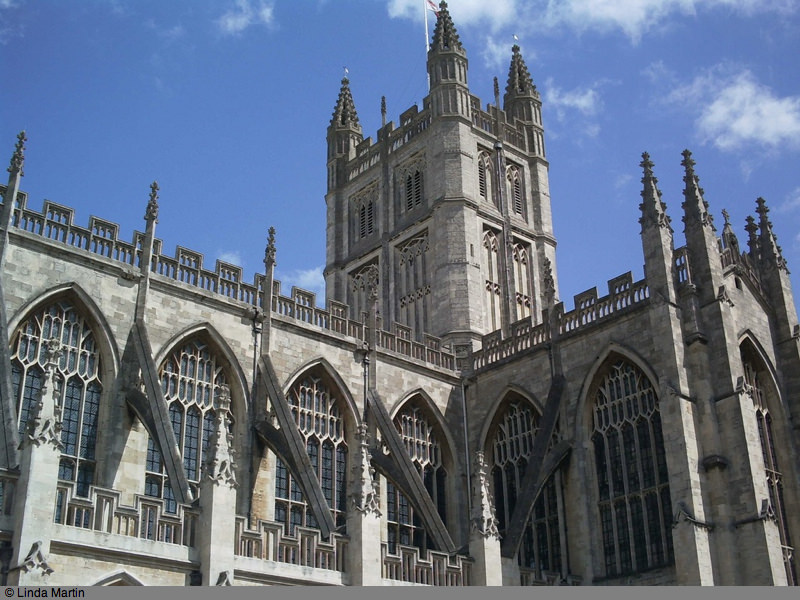
Bath Museums
Take your pick – Bath has a Fashion Museum, a Postal Museum, a Museum of Bath at Work, a Musuem of East Asian Art, a Jane Austen musuem, and a Museum of Astronomy (among many others). Unlike museums in London, you have to pay to enter, but for many you can get a 2-for-1 entry if you travel by train.
Gardens
Bath is full of parks and gardens. Royal Victoria Park was opened by Princess Victoria when she was 11 years old – she was so impressed that she honoured it with the word “Royal”. The Parade Gardens run along the river front near the abbey, and Jane Austen used to enjoy the free Sydney Gardens.
The Queen’s garden features an obelisk and is a nice place to have lunch, while the hidden gem of the Georgian garden is located at the back of a Georgian house and can be accessed from the Gravel Walk. There are a lot more to choose from – wander around and discover your favourite.
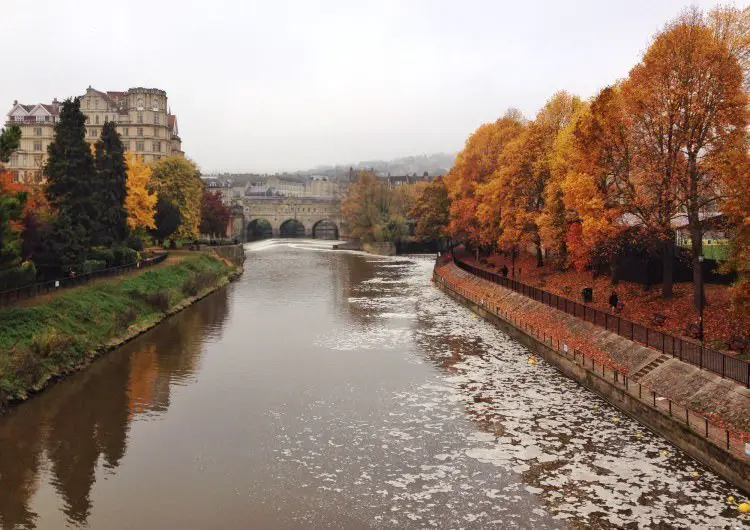
Buildings and rooms
Visit Bath Abbey – the last Gothic church in England. It’s just across the square from the baths, in fact you can get some nice photos of it from inside the bath complex.
Pulteney Bridge and Pulteney Weir are both impressive, the bridge being famous for having shops all along it, like Florence’s famous bridge. Apparently only four bridges in the world share this honour.
The Royal Crescent was designed by John Wood and finished in 1774, and is an excellent example of Georgian architecture – head to the Circus nearby for another one. The grass park in front of the Royal Crescent buildings features a haha, a kind of hidden fence used to keep out livestock.
Also, stop into the Assembly Rooms, to see where the balls in Jane Austen’s books were held.
Shopping in Bath
Jane Austen’s characters in her novels that are set in Bath always seemed to be shopping. Most of the shops around the Roman Baths are pretty touristy, but if you roam further afield you’ll find some nice little stores. And of course, there’s a full range of supermarkets, banks, and high street shops.
Eat! Our favourite cafes and restaurants – plus picnic options
Bath has a wide range of restaurants, but if you’re only here for a day, you might enjoy picking up a picnic and eating outside. There’s a Waitrose right near Pultney Bridge, stop in and stock up and eat beside the river in Parade Garden.
We discovered the best coffee we’ve had in the UK at the now-closed Colonna & Small’s Espresso Rooms in Chapel Row. The coffee was made well and with love, and the decor in the two small rooms upstairs was pleasant. If you’re after a cream tea, you could try the Sally Lunn’s tearoom, which is located in the oldest house in Bath, and sells the famous Sally Lunn bun.
Frequently Asked Questions about Bath, UK
Is Bath England worth visiting?
Bath is a great place for a visit during a stay in the UK. Whether you stay for a day or a year, you’re sure to have a great time! We have visited from London and Stroud, and also visited as part of the Cotswold Way.
What is Bath, England famous for?
The Roman Baths, of course! It’s literally named after them. It’s the scene or a reference for so many of Jane Austen’s novels. And, more recently, as the filming location for Bridgerton.
Is Bath a Bridgerton filming location?
Yes! Over 70 scenes in Bridgerton season one were filmed in Bath. The well-preseved Regency-era architecture and gardens provide a perfect backdrop. There’s a 2-hour walking tour of Bridgerton filming locations in Bath.
Is it worth visiting the Roman Baths?
I’ve been back twice, so I have to say yes – it’s worth visiting the Roman Baths. I enjoyed the mystery and religion as much as the architecture and impressive geothermal dynamics and engineering. I’ve gone by myself – tickets are around £17.50 – but there’s also a Roman Baths and Bath City walking tour.
Is visiting Bath expensive?
No more than any other city in Britain. I certainly didn’t notice our budget exploding – although I did spend more on museums than I might normally. Food, drink and accommodation are all in line with similar cities.
What are the best places to visit in Bath?
Look further up this page for our favourite things to do in Bath, UK.
Is Bath in London?
No! Bath is in Somerset, about 120 miles (195km) west of London.
How to get from London to Bath? By train or car?
It’s faster by train! It takes about 1 hour 20 minutes by train from London to Bath, with trains leaving as often as twice an hour.
By car, it’ll take 2:30 to 3 hours from London to Bath – a trip of around 125 miles.
Are there Bath tours and day tours from London?
Most day trips from London pack in quite a lot, like this Windsor, Stonehenge and Bath trip from London. That’d be a memorable day!
It’s perfectly plausible to build your own day trip to Bath from London by catching an early train there, and a late return. That’s about 3 hours on the trains, and a lot of sightseeing in the middle.
Is there a Bath guidebook?
There are several Bath guidebooks. I’d recommend the Cotswolds Slow Travel guide or the Austen guide if you’re that way inclined.
Can I tour Stonehenge from Bath UK?
Yes! Stonehenge is just under an hour’s drive south-east of Bath, so you can self-drive if you have a car. The train is around 2 hours, and that’s a bit painful.
There are some half-day tours that depart Bath for Stonehenge, and longer day tours which take in both Stonehenge and the Stone Circle at Avesbury.
Can I start the Cotswold Way in Bath?
Yes, Bath is the starting point for the Cotswold Way if you’re walking South-to-North. Obviously, if you’re walking North-to-South, it’s the last city on the Way. If you’re interested in walking, we have a full Cotswold Way Guide and Cotswold Way Packing List.
Want to support Indie Travel Podcast? Book a tour, or shop on Amazon after clicking these links. It doesn’t cost you any more but we get a small commission. Cheers!
